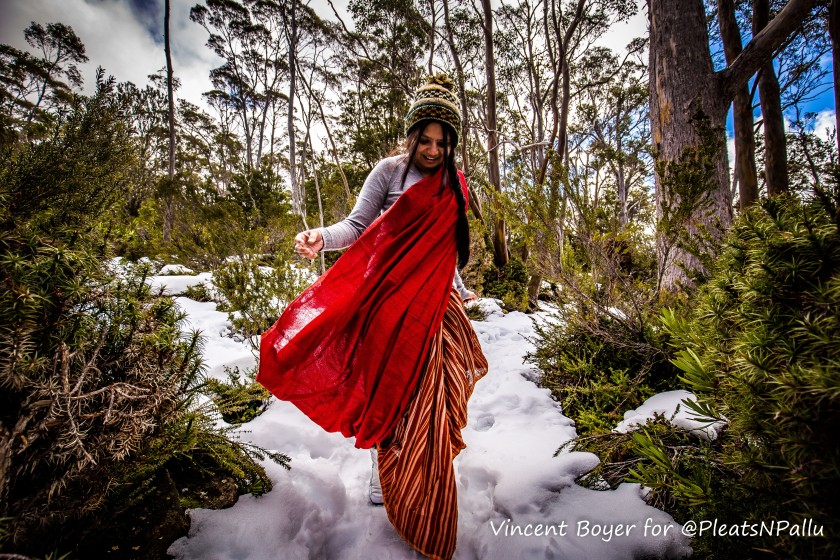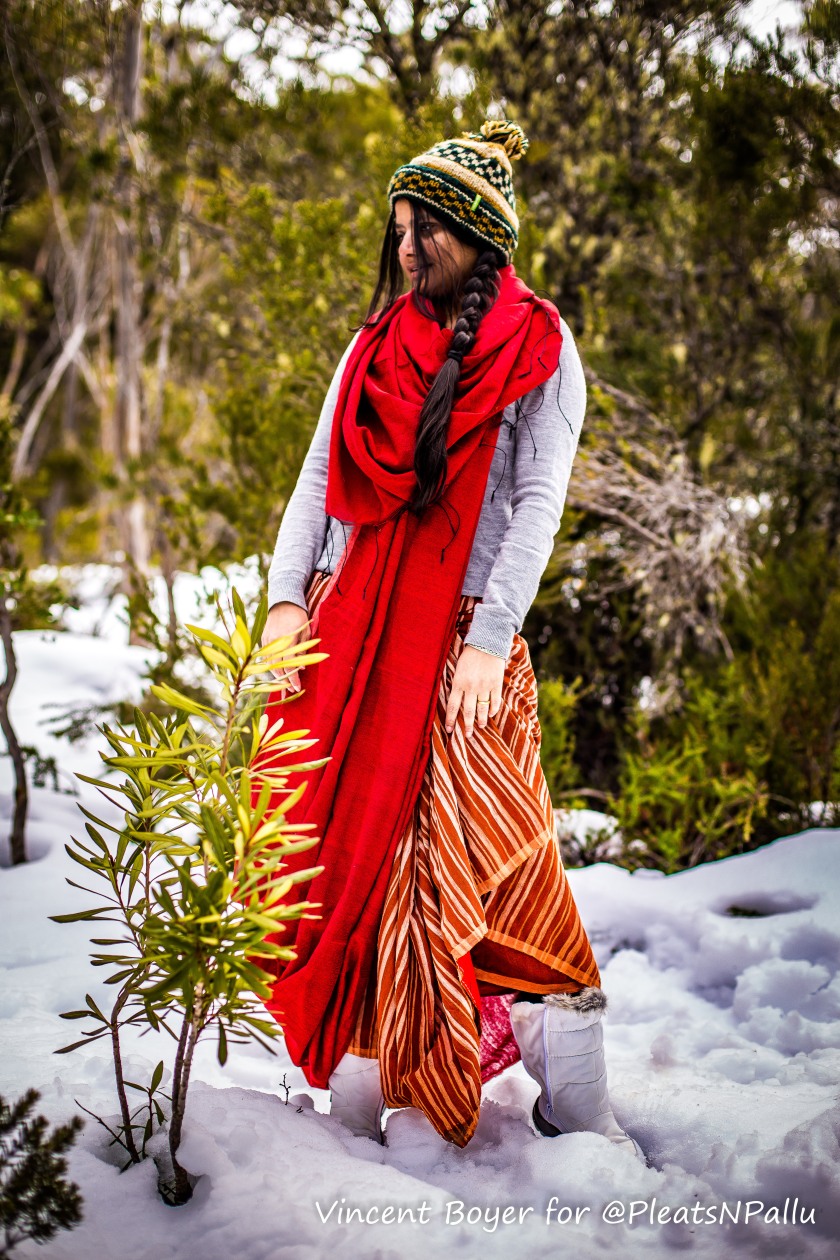An example of yardage that was worn as a saree for ages before moonlighting as a lehenga (or gaghra or chaniyo, depends what you prefer to call it) …
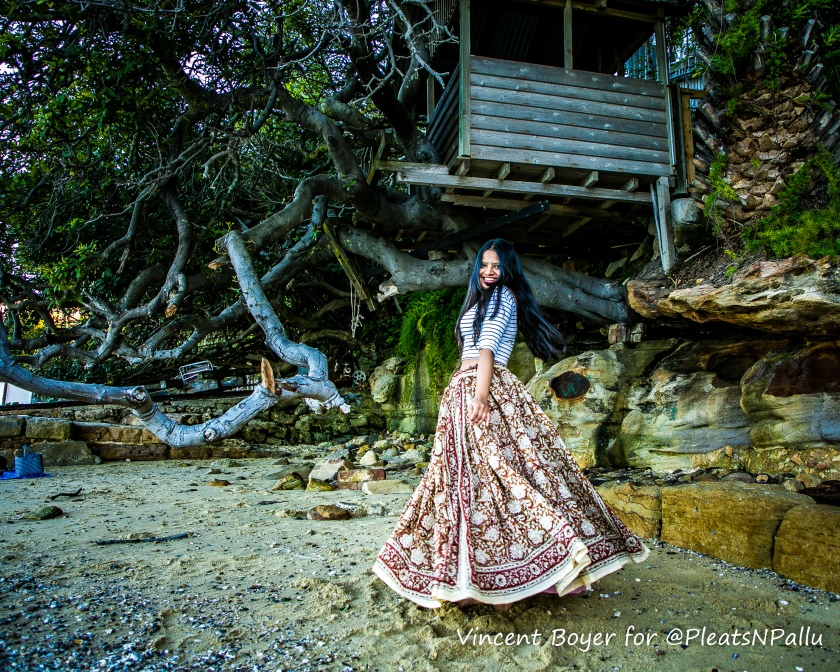
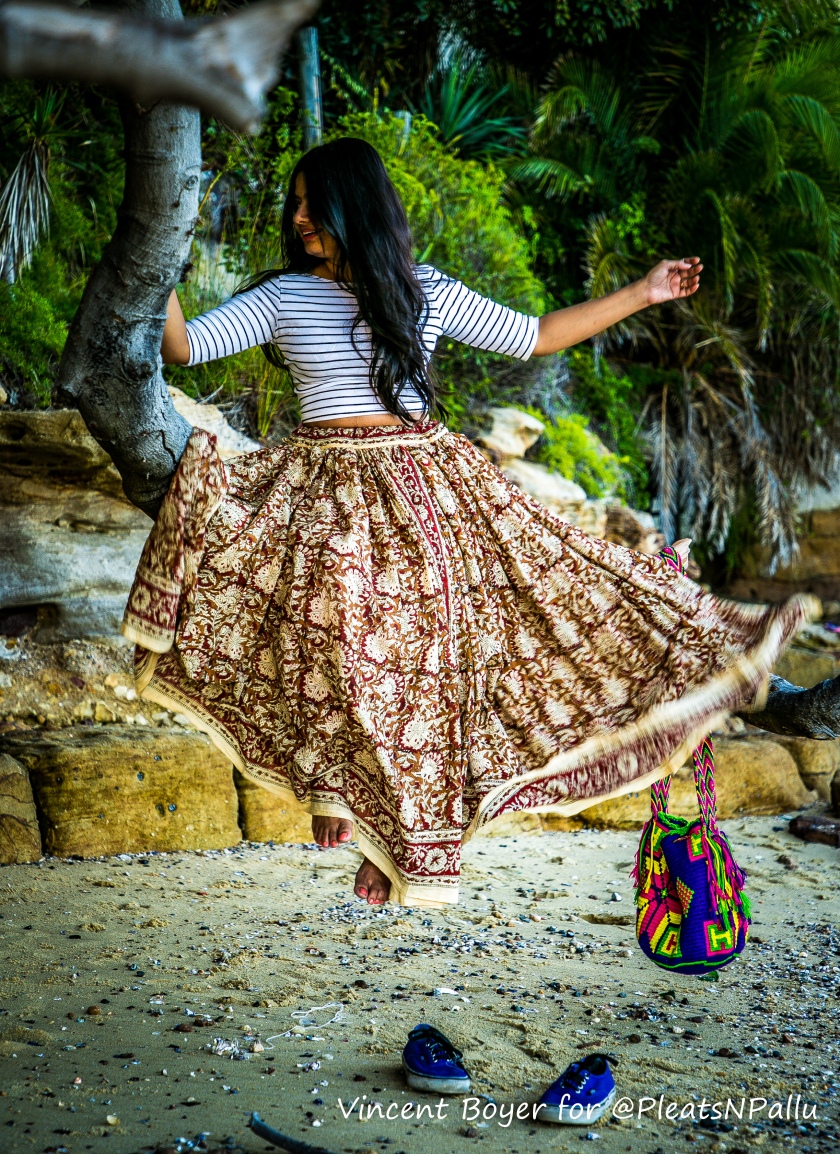
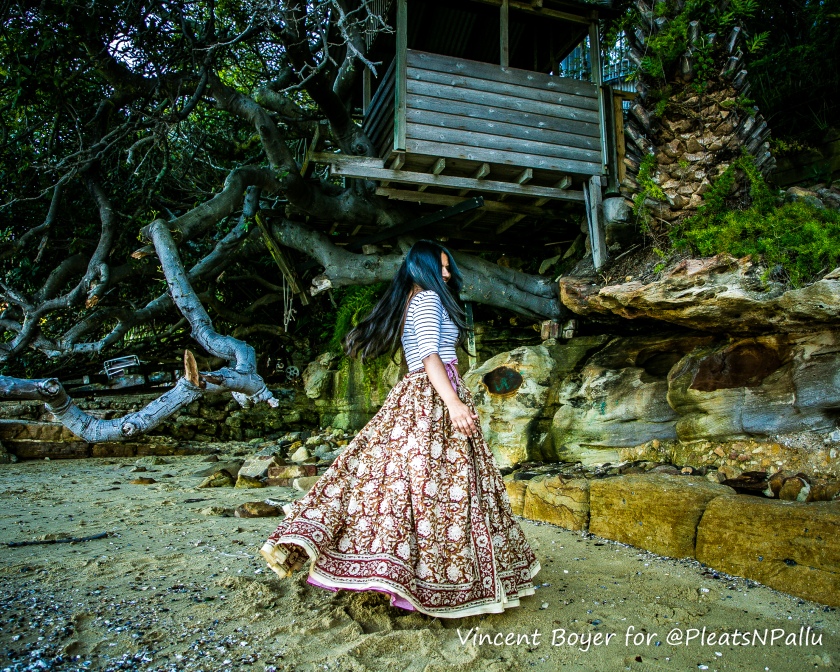
Photos: Vincent Boyer (Say hi on instagram @vincetravelbook)
Reusing, recycling or up cycling is a one way to breathe new life into sarees that have ceased to be used.
This is one of my favourite prints but I have a whole lot of kalamkari sarees in similar colours and had my tailor in India upcycle them into various things last month. This one in the photos is a DIY, made at home following the pattern from another India made one.
One can make the most of one’s six-yard beauties by repurposing them into timeless pieces. It just takes a little bit of inspiration and a can-do attitude with generous helpings of not caring if the piece is not absolutely perfect!
This lehenga is a little uneven at the bottom, there is a lot that we could do better next time but I am ecstatic wearing it knowing that it was made at home and that’s what makes it perfect to me!
I wore it for an afternoon at the beach with a striped croptop, beat up sneakers and one of my many Wayuu Mochilla bags. I genuinely feel like there’s no such thing as having too many lehengas because they are versatile pieces that can be dressed up or down.
This particular piece for example can be worn casually with a tee to the beach, can be dressed up with a cute crop-top for brunch, I will be wearing it with bandhani during Navratri garba/ dandiya dance-athons, it can totally be wedding-appropriate with the right top, worn with a long kurta or anarkali with a bunch of jewellery would make it fancy-do friendly, or just wear the lehenga as a dress by tying it way high up and and so much more.
Cotton lehengas, even embroidered gaghras can be styled in myriad ways and it is a great way to repurpose sarees that one doesn’t reach for anymore.
Some of the ways I plan to wear this lehenga are listed below and I am always looking to add to this list:
- With a white shirt and wedge heels
- With a backless choli, heaps of beaded jewellery and mojris/juttis
- With wedge heels, a fun bandhani blouse and saree
- With a Kutchi embroidered choli, a tonne of chunky silver jewellery and Kolhapuri chappals
- With a silk full sleeved blouse and sky-high heels
- With another block print blouse, plain khadi saree and sneakers
- With a bandhani dupatta worn as a cross body blouse
- With a plain cotton long kurta and an oversize tote
- With an anarkali and tonnes of fresh flowers
- With a swimsuit top/ sports bra and fun jewellery
What are your favourite ways to upcycle sarees and what is your preferred way to style a lehenga?
